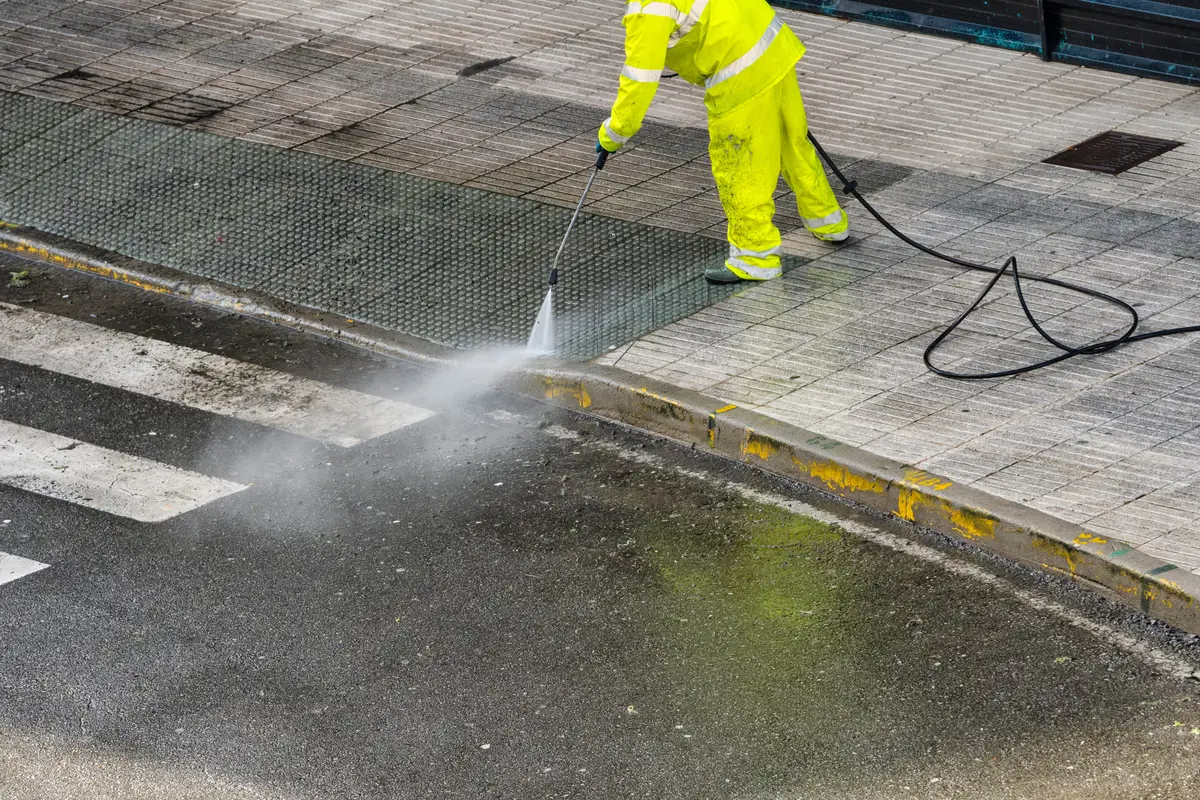If an area is set to grow within the pavement industry in the next ten years, it’s permeable pavement. Permeable pavements allow water to pass through the pavement in various ways, depending on the pavement’s construction. Permeable pavers, porous asphalt, and pervious concrete are all types of permeable pavement constructed to curtail water runoff, which is the biggest benefit of permeable pavement. However, its ability to control water isn’t the only asset permeable pavement provides. It’s been earmarked as a greener technology and a way for cities and businesses to be more conscionable as they move forward with their paving needs.
A report by Research and Markets predicts the global pervious pavement industry will grow to $24.37 billion by 2027, up from just over $16 billion in 2019. While the Market Statsville Group (MSG) predicts a more modest increase, they still set the predicted compound annual growth rate (CAGR) at a robust 6.1% from 2023 to 2033. It’s likely pavement businesses will see increased demand for permeable pavement in the next decade, and it’s important to know how to care for it and how to inform customers of the need to preserve permeable pavement with regular maintenance.
Reasons to Install Permeable Pavement
- Stormwater runoff, drainage, and flood control are problems. One of the earliest uses of permeable pavement is to assist in areas that simply cannot handle the flow of water it receives. The porousness of permeable pavement allows water to filter into the groundwater table instead of running across the pavement. This replenishes groundwater and keeps chemicals and pollutants from entering the water at the same time.
- A municipality has an aging sewer system. Aging sewer systems are an environmental threat to its local citizens and the water table as well. Aging pipes leak and are more likely to have blockages, which lead to sewage backups. This contaminated water then mixes with stormwater and runoff and flows into local streams, rivers, and lakes. Permeable pavement can relieve the strain on these aging systems.
- Cities, businesses, and individuals are looking for more green solutions. More individuals and businesses are concerned with pavement’s environmental impacts and are looking for workable solutions. Permeable pavement filters pollutants and prevents them from entering groundwater, cuts down on water runoff and erosion, and reduces pavement’s heat island effect in urban areas.
Once permeable pavement is installed, regular maintenance is needed to handle stormwater runoff and control pollution. Although porous pavement allows water to pass through it, it is susceptible to clogging from sediment and other debris. To preserve permeable pavement well, plan to clean the pavement once a year and more often if debris is visible.
Best Preservation Practices for Permeable Pavement
- Sweep the pavement to remove dust and sediment. If the paved area is small (patio, walkway, etc.), this can be done by hand.
- Clean the pavement with water. Note that using a pressure washer can permanently damage the pavement.
- Wet or dry vacuum the pavement. For small areas, this can be done with a heavy-duty wet/dry vacuum, or by a high-powered vacuum sweeper for large areas like parking lots and city streets. Most areas like this should be swept by these vacuum machines every six months. If the pavement has a lot of debris on it from leaves, it may need more frequent attention.
- Sand shouldn’t be applied to permeable pavement during snow and ice storms. The grains can fill the porous spaces and clog the pavement.
- Conduct regular inspections of the permeable pavement. Look for clogged inlets and outlets, standing water after rain, or moss. All of these can indicate the permeable pavement needs maintenance.
As permeable pavement becomes more commonly used in cities and businesses, following these simple maintenance tips will ensure the pavement keeps the surface water-free while functioning well and sustainably.
Learn more about permeable pavement from the Environmental Protection Agency’s Green Infrastructure site, or read this TechBrief from the Federal Highway Association.
